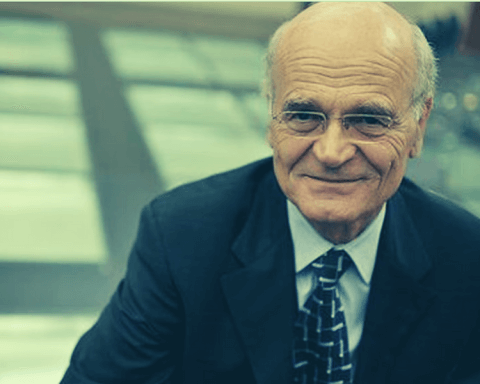Hydro-Québec has ambitions to be the “battery” for a renewable-energy-powered grid in northeastern North America, but its first order of business is closer to home: ensuring the province can decarbonize its own economy with clean, reliable and affordable electricity.
The provincially owned utility is pursuing two of the continent’s largest decarbonization projects, that would supply hydropower to Massachusetts and New York City, displacing natural gas in those markets. In both cases, the transmission projects needed to complete the deals have run into local opposition that could derail Hydro-Québec’s export plans.
It’s also participating in talks on a project called the Atlantic Loop. The regional grid would bring hydropower to the Maritimes to displace coal-fired power and avoid the need for new natural gas plants to complement growing supplies of wind power.
If all parties can agree, new transmission lines would flow electricity from Quebec to the south and the east to provide baseload power and to back up intermittent generation of renewables. They would, in turn, allow American and Atlantic Canadian producers of renewable energy to sell to Quebec when there is a surplus of wind power.
However, even as it looks to increase electricity trade with its neighbours, Hydro-Québec faces a huge challenge in serving as the linchpin for the province’s ambitious decarbonization plans, which could result in as much as 50% more electricity demand in 2050.
The utility’s original focus was on selling hydroelectric power to Quebecers and keeping rates low for the province’s industrial and residential consumers. While that core mandate remains, Hydro-Québec chief executive Sophie Brochu says, the corporation is now determined to advance regional co-operation in decarbonization while investing more heavily in energy efficiency, wind power, and new, smarter grid technology.
The “North Star” for all electricity systems operators and utilities in North America is to deliver the low-carbon energy transition at the lowest cost possible to their customers, Brochu says.
“We have a responsibility to, obviously, serve our respective markets,” she said. “We [also] have a collective responsibility to see how we can work in common with our respective infrastructures and means of production to access this North Star.”
For the third year, Hydro-Québec ranked first among the Corporate Knights Best 50 Corporate Citizens in Canada. Its ranking was based not only on the low-carbon nature of its immense electricity business, but on water productivity, taxes paid, CEO-to-average-worker pay, executive and board gender diversity, and clean revenue.
Brochu herself is the personification of both Hydro-Québec’s progress and its deep connections with the province’s business culture. When she took over in 2020, she became Hydro-Québec’s first female CEO. The appointment interrupted the sabbatical she had planned for herself when she resigned after serving 12 years as chief executive officer at Montreal-based Énergir, the former Gaz Métro.
Keeping the home fires clean-burning
In March, Hydro-Québec released its strategic plan for 2022 to 2026. It laid out the challenges ahead and warned that pricing structures would have to change to encourage energy efficiency and conservation. In other words, if Hydro-Québec is to succeed in its ambition of becoming the renewable “battery” for a large swath of North America’s northeast, it would have to restructure its rates, especially at peak hours, to get Quebecers to stop wasting so much power.
Between 2020 and 2029, it projected that Quebec’s own demand for clean power would increase by 20 terawatt-hours (TWh), or roughly 10% of current levels. By 2050, decarbonization efforts – including a dramatic increase in electric vehicles – would result in an increase of 100 TWh, or a 50% rise.
Brochu says they expect to meet that 2029 demand through an aggressive energy-efficiency program; the refurbishment of existing hydro facilities; and growth in wind power, including as much as 3,000 megawatts of capacity provided by a recently announced partnership between Hydro-Québec, Énergir and Borealis.
Even with that higher demand in Quebec, the utility is pursuing deals to increase exports by some 20 TWh annually to the United States under firm contracts. (By way of comparison, Nova Scotia’s power demand was 10 TWh in 2019.)
Eyeing expansion to the south
American politicians and systems planners – and a number of power sector analysts – are looking to Quebec to provide relatively low-cost, low-carbon power to help drive states’ own decarbonization plans. Hydro-Québec is moving on two separate deals: the 9.45 TWh New England Clean Energy Connect, to serve Massachusetts, and the New York City–bound Champlain Hudson Power Express, with a capacity of 10.5 TWh. The US$4.5-billion New York project was approved by state regulators in April, but further legal fights are possible.
A study from the Massachusetts Institute of Technology in 2020 concluded that increased reliance on hydropower from Quebec provides the most cost-effective route to decarbonization for northeastern states, especially when coupled with a bidirectional trade in which the Canadian province purchases surplus renewable power when generation is high but demand is low.
In the longer-term, Quebec could serve a battery function, recharging its reservoirs when there is a surplus of renewable power and flowing hydropower when intermittent renewables cannot fill demand, the author of the MIT study, Emil Dimanchev, said in an email.
Brochu says Hydro-Québec is eager to expand the combined benefits of wind and hydro. However, the current agreements with Massachusetts and New York are for a set capacity, which would flow regardless of the availability of wind power.
Proposals for Quebec to expand power exports to Ontario have long failed to materialize, in part because Hydro-Québec wants to sell firm capacity and its neighbour wants a more flexible purchase of energy to backstop renewables. The Quebec utility could face a better reception in the United States if it “reframed” the New England and New York projects “along the lines of the battery concept by bundling new transmission with large-scale renewable expansion in the U.S.,” Dimanchev says.
Opposition to U.S. expansion plans brewing
As it is, Hydro-Québec is facing tough opposition to the massive transmission projects needed to complete the American deals.
In Maine, voters rejected a US$1-billion transmission plan to bring power from Quebec in a referendum last November. Hydro-Québec’s contractor is continuing with some site preparations as the utility and its partners seek a court ruling that would allow completion.
Several groups unsuccessfully opposed the New York transmission line that would be buried under the Hudson River. They include the environmental group Riverkeeper, which submitted a brief arguing that Quebec’s hydropower is not as low-carbon as Hydro-Québec claims and that the utility is disregarding Indigenous concerns.
Damming and flooding large areas can indeed cause the release of methane and carbon dioxide as vegetation dies off. Hydro-Québec argued that the Riverkeeper analysts cherry-picked data, in part by focusing on near-term effects, while for the life of the project, its hydropower has among the lowest carbon intensity in the world.
The Riverkeeper submission included statements from a handful of Indigenous representatives, who complained that Hydro-Québec’s hydropower has damaged their traditional territory.
Brochu acknowledges that Hydro-Québec has had longstanding problems in acknowledging and addressing Indigenous concerns but says the utility is working to address its faults.
“Things need to improve, and we are improving them,” she says, while adding that there are many different perspectives within the Indigenous communities. Brochu recently participated in a ceremony marking Hydro-Québec’s commitment to bring power to the village of Kitcisakik, the last Indigenous community that was unconnected to the grid. “It is as thrilling to bring power to Kitcisakik as it is to [bring it to] Queens in New York,” she says.
Hydro-Québec is also working with a Mohawk community that wants to invest as partners in a transmission line that traverses their traditional territory on its way to New York. However, Hydro-Québec faces myriad lawsuits and other challenges from Indigenous groups stemming from its long history of damming rivers across the province and in Labrador dating as far back as the development of Churchill Falls in the 1960s and ’70s.
The Indigenous complaints have so far not derailed Hydro-Québec’s export plans.
Pierre-Olivier Pineau, an energy expert at the HEC business school in Montreal, says rejection of Quebec power would only hurt American consumers. At the same time, the loss of export sales would mean less supply pressure and lower prices at home, he says.





